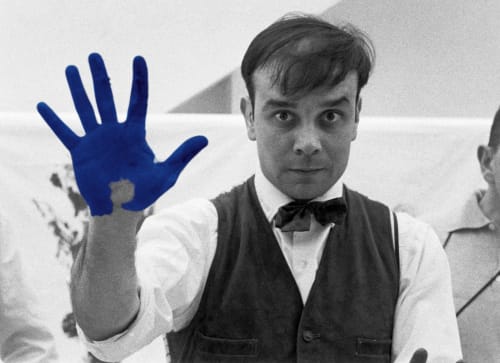-
Overview
I did not like the nothing, and it is thus that I met the empty, the deep empty, the depth of the blue.
Investing in Yves Klein's artworks can be a compelling choice for art enthusiasts and collectors alike. The scarcity of Klein's pieces, given his relatively short career and untimely death at 34, adds intrinsic value to his works. His innovative contributions to the art world, especially the development of International Klein Blue and pioneering techniques like Anthropometry, contribute to the uniqueness of his portfolio. The continued influence of Klein's ideas on contemporary art further enhances the long-term investment potential. As with any art investment, thorough research and expert advice are essential, but Yves Klein's limited and groundbreaking body of work makes his pieces sought after in the art market, providing both aesthetic pleasure and potential financial returns for discerning collectors. -
Series

Yves Klein
Petite Venus, 1956/1957Brass pin, International Klein Blue Pigment, Gold Leaf, and Acrylic5 x 3.5 x 3.5 InchesEdition of 500Series: SculpturesCopyright The Artist1of 8

